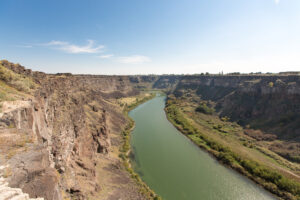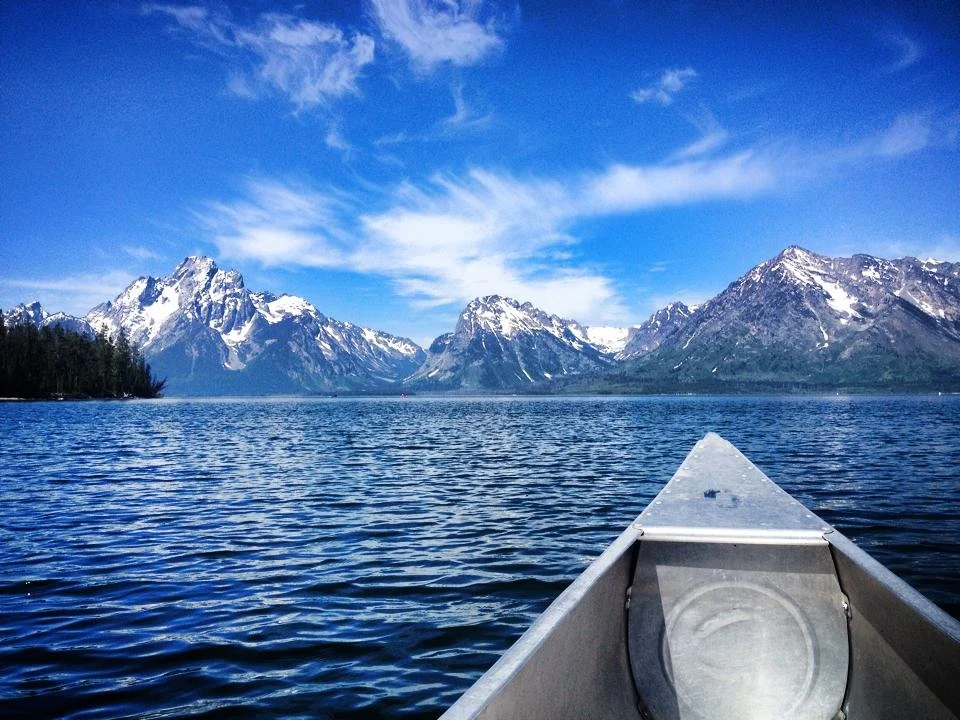Stories of the Snake: Where the river begins
From its headwaters in eastern Idaho and Wyoming, the upper tributaries of the Snake River boast some of the best fishing on the planet. The situation is much different downriver and across the state to the Oregon border. The once-mighty river dwindles to a trickle in places. Hot and full of pollution from agriculture and other industries, the river is plagued by toxic algae outbreaks, killing fish and prompting warnings for humans and their pets to stay out of the water. The Snake River has defined much of the history in the region, and through "Stories of the Snake," we bring to light the adventures and economic value this mighty river has provided for generations, and why stronger protections are needed to keep it this way.
The Snake River's headwaters in Wyoming to the Idaho border is where I defined myself as an angler. In those early years, I spent countless hours wading the crystal clear meandering river, learning the ways of the river, and embracing the grounding effect that comes with the river. The fishing was world-class, the tree-covered mountainous scenery continuously took my breath away, and it was here that I learned the cathartic motions of casting and mending, with an occasional adrenaline-filled moment as I landed a fish.Some memories from my time there stand out more than others. When I reflect on the times I fished the tailwaters at Jackson Lake dam, I am met with vivid memories of otters swimming, playing, and feasting in front of me (hoping that meal wouldn't be a fish I was reeling in). The lush, narrow waterway near the border of Grand Teton National Park and Yellowstone takes me back to moments of fleeing the river to avoid booming thunderstorms that shook the ground beneath me. And the beautiful rocky, narrow stretches near the Hoback Junction take me back to some of the earliest trout I caught on flies during the later fall season. Even though these memories bring the warming sensation of nostalgia, there is one memory that quickly comes to mind every time… It was late summer or early fall, and a group of us had thrown our waders on and hit the river in search of fish. The golden hues of the evening hours encompassed the area. The air was not warm, yet not cold — it was simply that perfect temperature felt when autumn arrives. The fishing up to that point had been quite eventful. Our group's laughs filled the landscape for over an hour as we landed fish after fish. At one point, I felt our group was not alone — the feeling was non-threatening, but it was evident we were not alone. Near the edge of the trees that lined the river, I saw a small herd of elk hidden amongst the golden glow of quaking aspens and cottonwoods. The lead cow elk made her way out of the trees — head held high in its grand, regal position — surveying all around her. The others slowly followed, alert yet relaxed. I stood thigh-high in the Snake, surrounded by still air, silent and determined to blend in with the landscape, present in the moment. The river's water slowly flowed past me, and I heard the occasional reassuring chirp from cow elk to their calves. It was as though I was standing in a scene from a National Geographic magazine. The lead cow gracefully led the herd to the river's edge. She slowly entered the river and began to make her way across. One by one, the rest of the herd slowly followed her. Once the herd reached the other side, they entered the thick timber, and I never saw them again.This moment in my life has stayed with me. Maybe it was the first time I was close enough to an elk that my senses were overwhelmed with their musty odor. Perhaps it was the stillness I felt in the moment. Or maybe it was simply a moment where I felt one with nature. No matter the reason, it is a moment that is at the forefront of my mind when I reminisce about fishing near the headwaters of the Snake.
It was late summer or early fall, and a group of us had thrown our waders on and hit the river in search of fish. The golden hues of the evening hours encompassed the area. The air was not warm, yet not cold — it was simply that perfect temperature felt when autumn arrives. The fishing up to that point had been quite eventful. Our group's laughs filled the landscape for over an hour as we landed fish after fish. At one point, I felt our group was not alone — the feeling was non-threatening, but it was evident we were not alone. Near the edge of the trees that lined the river, I saw a small herd of elk hidden amongst the golden glow of quaking aspens and cottonwoods. The lead cow elk made her way out of the trees — head held high in its grand, regal position — surveying all around her. The others slowly followed, alert yet relaxed. I stood thigh-high in the Snake, surrounded by still air, silent and determined to blend in with the landscape, present in the moment. The river's water slowly flowed past me, and I heard the occasional reassuring chirp from cow elk to their calves. It was as though I was standing in a scene from a National Geographic magazine. The lead cow gracefully led the herd to the river's edge. She slowly entered the river and began to make her way across. One by one, the rest of the herd slowly followed her. Once the herd reached the other side, they entered the thick timber, and I never saw them again.This moment in my life has stayed with me. Maybe it was the first time I was close enough to an elk that my senses were overwhelmed with their musty odor. Perhaps it was the stillness I felt in the moment. Or maybe it was simply a moment where I felt one with nature. No matter the reason, it is a moment that is at the forefront of my mind when I reminisce about fishing near the headwaters of the Snake.  The Snake River is dammed as early as its life begins, but the water quality, especially in Wyoming, provides and supports many different life forms. As I think about the river that I knew in Wyoming and compare it to the one I know in southern Idaho, I am taken aback. The beautiful, crystal-clear waters in Wyoming feel like an entirely different river than the dark green river that I fish today in southern Idaho!The Snake River is one of the ten longest rivers in the nation. It provides life and sustenance for numerous species and supports some of the most key industries in the regions it runs through. Where it begins is one of the most prolific wild places in America. Once it makes its way to the Columbia River, the river is so polluted and contaminated that it looks, feels, and acts nothing as it did at its wild headwaters. Through research and observation, we know what the problems are, and we know how to remedy them. Through collaborative efforts between communities and industry, we Idahoans can restore the Snake so that it is once again safe, swimmable, and fishable in its entirety!
The Snake River is dammed as early as its life begins, but the water quality, especially in Wyoming, provides and supports many different life forms. As I think about the river that I knew in Wyoming and compare it to the one I know in southern Idaho, I am taken aback. The beautiful, crystal-clear waters in Wyoming feel like an entirely different river than the dark green river that I fish today in southern Idaho!The Snake River is one of the ten longest rivers in the nation. It provides life and sustenance for numerous species and supports some of the most key industries in the regions it runs through. Where it begins is one of the most prolific wild places in America. Once it makes its way to the Columbia River, the river is so polluted and contaminated that it looks, feels, and acts nothing as it did at its wild headwaters. Through research and observation, we know what the problems are, and we know how to remedy them. Through collaborative efforts between communities and industry, we Idahoans can restore the Snake so that it is once again safe, swimmable, and fishable in its entirety!

